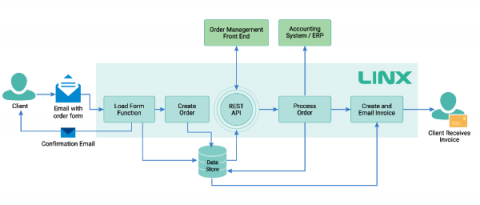Systems | Development | Analytics | API | Testing
Low Code
2023 Supply Chain Trends: Succeeding in Times of Change
It began with the pandemic. Consumer spending shifted from experiences to goods, spiking demand. Ports clogged due to shutdowns. Factories operated at reduced capacities from sickness, lockdowns, or even infrastructure issues like rolling blackouts. But it didn’t end there. The ripple effects have continued. Supply chains continue facing upheavals, particularly with respect to inflated prices and global conflict like the war in Ukraine. This leaves supply chain professionals on shaky ground.
Streamlining email: Read and process emails with backend automation
Businesses frequently use emails to maintain their core functions. They are the main form of communication with both inside and external entities. An email inbox can become hard to manage when it comes to large organizations that receive thousands of emails monthly. Introducing automation to the email processing system can help save time and guarantee that nothing is overlooked.
How to generate Excel files with low-code
Excel is widely used in different businesses and is a crucial element in the analysis and distribution of data. When generating reports, merging data from multiple sources or creating a document for a particular purpose, a low-code platform can provide consistent outcomes with less effort than the traditional coding approach. With Linx, for instance, you can craft an Excel file from any data source, e-mail it to a designated user, and then archive it for future reference.
How to automate sending custom emails
Making sure that notifications, reports, and other messages are promptly delivered to the right people is a frequent – and important – job for IT teams. Even if there are 100s of emails that must be dispatched with slight differences in the content or added reports, it is sensible to automate the procedure of creating and sending out these emails. Linx can simplify this process, speed up the creation process, and make it easier to host this kind of solution.
3 Ways to Help IT Improve Regulatory Risk Management and Compliance for Financial Services
Managing a delivery team that supports any complex business requires aligning people and technology with the needs of your customers in order to deliver the software they need to run the business. Firms that operate within regulated environments like financial services, including capital markets also have to contend with external influence from regulatory partners—which can shape not only what you’re asked to do but also how you need to do it.
How to automate email reading and processing
3 Things to Look for in an Automated Underwriting System
The underwriting process is notoriously inefficient. Today, underwriters typically spend 40% of their time on non-core activities such as gathering and entering data for submissions and renewals, issuing policies, and administrative tasks. The result of such manual underwriting is lost productivity and higher costs, with an expected price tag for insurers of $85–$160 billion in lost business over the next five years. In the current economic climate, efficiency is more important than ever.
Working with complex data types and data objects
Working with complex nested data objects can be difficult, especially when accessing a specific property or subset of data in a complex data structure. This post will look at complex data objects, what they are, and an easier way of managing those complex data objects by using complex types.
Business process automation with low-code
Every business can benefit from automating time-consuming and repetitive tasks. It allows businesses to save time, reduce errors, and improve efficiency by automating workflows and processes. This post will go into more detail on how low-code can help to facilitate BPA. The first section of this post will look at the functionality that makes Linx a good match for BPA, and then an example of how a business process can be automated using Linx.











